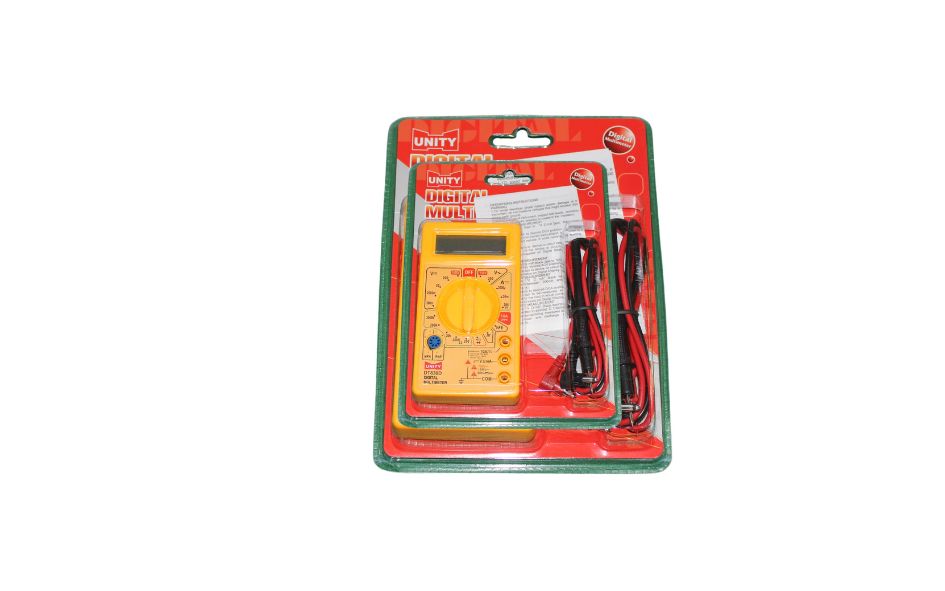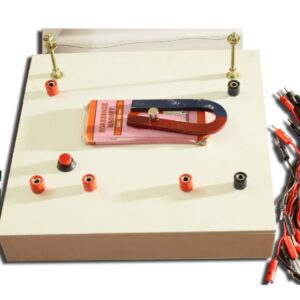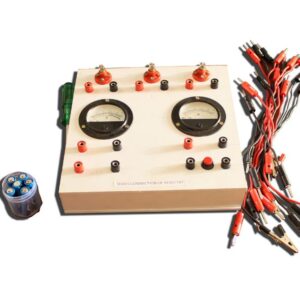BASIC ELECTRIC CIRCUIT ( THREE CASES) WORKING MODEL
SCIENCE LAB EQUIPMENT WORKING MODEL / SCIENCE EXHIBITION WORKING MODEL
5 in stock
Refund
Unfortunately, once an order is placed, there is no refund available. However, we do offer exchanges for defective or damaged items.
Due to the nature of our products and the potential for misuse or mishandling, we do not offer refunds. We believe in customer satisfaction and strive to provide quality exchanges for any issues that may arise.
If you have received a defective or damaged item, please contact our customer service team and they will assist you with the exchange process. Please note that exchanges are subject to availability and product conditions.
We do not offer refunds for change of mind purchases, but we do offer exchanges for valid reasons such as defects or damages.
Delivery
My Science Kart delivers orders through a reliable and efficient shipping service to ensure your products arrive safely and on time.
Yes, you can easily track your order from My Science Kart by using the tracking number provided to you once your order has been shipped.
If you have any issues with your order from My Science Kart, please contact our customer service team who will be happy to assist you and resolve any problems.
Payment
You can pay for your purchases on My Science Kart using various payment methods such as credit/debit cards, net banking, UPI’s and mobile wallets.
Yes, we use industry-standard encryption technology to protect your payment information and ensure that it is secure.
If you have any payment-related queries or issues on My Science Kart, you can contact our customer support team through the website or email us at support@mysciencekart.com.
BASIC ELECTRIC CIRCUIT ( THREE CASES) |
Absolutely, here are three basic electric circuit setups
1. **Simple Series Circuit with Bulb:**
– Components Required:
– Battery (1.5V AA battery)
– Bulb (1.5V bulb)
– Connecting wires
– Assembly:
– Connect one terminal of the battery to one terminal of the bulb using a wire.
– Connect the other terminal of the bulb to the other terminal of the battery using another wire.
– Explanation:
– In a series circuit, the components are connected in a single path.
– The current flows through each component in the circuit.
– When the circuit is complete, the bulb should light up, indicating the flow of electric current.
2. **Parallel Circuit with Two Bulbs:**
– Components Required:
– Battery (1.5V AA battery)
– Two Bulbs (1.5V bulbs)
– Connecting wires
– Assembly:
– Connect one terminal of the battery to one terminal of each bulb using separate wires.
– Connect the other terminal of both bulbs to the other terminal of the battery using separate wires.
– Explanation:
– In a parallel circuit, the components are connected in multiple paths.
– Each component has its own separate path for current to flow.
– Both bulbs should light up independently, demonstrating that they receive the same voltage from the battery.
3. **Series-Parallel Combination Circuit with Switch:**
– Components Required:
– Battery (1.5V AA battery)
– Two Bulbs (1.5V bulbs)
– Switch
– Connecting wires
– Assembly:
– Connect one terminal of the battery to one terminal of the first bulb.
– Connect the other terminal of the first bulb to one terminal of the switch.
– Connect the other terminal of the switch to one terminal of the second bulb.
– Connect the other terminal of the second bulb to the other terminal of the battery.
– Explanation:
– This circuit combines aspects of both series and parallel circuits.
– The bulbs are connected in series with each other, but this series combination is connected in parallel with the switch.
– Students can observe the effect of opening and closing the switch on the brightness of the bulbs.
These circuit setups provide hands-on learning opportunities for students to understand the basic principles of series circuits, parallel circuits, and series-parallel combination circuits. They help students grasp fundamental concepts in electricity and circuitry in an engaging manner.
1. Simple Series Circuit:
Components:
- Battery (Power source)
- Resistor
- Connecting wires
Working:
- Connect one end of the resistor to the positive terminal of the battery and the other end to the negative terminal, forming a series connection.
- When the circuit is complete, current flows from the positive terminal of the battery, through the resistor, and back to the negative terminal.
- The resistor limits the flow of current in the circuit, converting electrical energy into heat.
2. Parallel Circuit:
Components:
- Battery (Power source)
- Two or more resistors
- Connecting wires
Working:
- Connect one end of each resistor to the positive terminal of the battery and the other end to the negative terminal, forming parallel connections.
- Each resistor provides a separate path for current to flow from the positive terminal of the battery to the negative terminal.
- The total current flowing through the circuit is divided among the parallel resistors based on their individual resistances.
3. Series-Parallel Circuit:
Components:
- Battery (Power source)
- Combination of series and parallel connected resistors
- Connecting wires
Working:
- Combine resistors in both series and parallel connections within the circuit.
- Series-connected resistors offer a single path for current flow, while parallel-connected resistors offer multiple paths.
- The total resistance of the series-parallel circuit is calculated based on the combination of resistors connected in series and parallel.
- Current flows from the positive terminal of the battery, through the series and parallel resistors, and back to the negative terminal.
These basic electric circuit configurations illustrate different arrangements of components and how they affect the flow of current in a circuit. They serve as fundamental building blocks for understanding more complex electrical systems.
| Weight | 0.5 kg |
|---|---|
| Dimensions | 25 × 25 × 5 cm |
You must be logged in to post a review.
Q & A
Related Products
AC ELECTRIC GENERATOR WORKING MODEL
- ✓ 100% Quality products
TEMPERATURE AND RESISTANCE WORKING MODEL
- ✓ 100% Quality products
RIGHT HAND RULE - 1 WORKING MODEL
- ✓ 100% Quality products
SERIES CONNECTION OF RESISTORS WORKING MODEL
- ✓ 100% Quality products
OERSTED EXPERIMENT WORKING MODEL
- ✓ 100% Quality products
HEAT, TEMPERATURE and KINETIC ENERGY WORKING MODEL
- ✓ 100% Quality products
PARALLEL CONNECTION OF RESISTORS WORKING MODEL
- ✓ 100% Quality products
MULTIMETER
- ✓ 100% Quality products
Product categories
- Circuits & Projects 233
- My Science Kart 665
- Raw Materials For Projects & Lab Equipments 381
- Science Exhibition 516
- Science Exhibition Projects & Working Models 344
- Biology Science Exhibition Projects & Working Models 31
- Chemistry Science Exhibition Projects & Working Models 12
- Mathematics Science Exhibition projects & Working Models 7
- Physics Science Exhibition Projects & Working Models 129
- Robotics Science Exhibition Projects & Working Models 23
- Social Science Exhibition Projects & Working Models 20
- Science Lab Equipments With Working Models 363
Cart
TRULY INDIAN EDUCATION BRAND
Over 10,000+ Happy Customers
My Science Kart
Address:- Ground floor, Lakshmi Nagar, D.No:- 40-1/1-5, PVP Mall Backside, Mogalrajapuram, Labbipet, Vijayawada, Andhra Pradesh 520010
7673977997, 0866-3543677
mysciencekart@gmail.com
Categories
MAP
© My Science Kart 2024, Designed & Developed By Synfocy Tech Solutions

























Reviews
There are no reviews yet